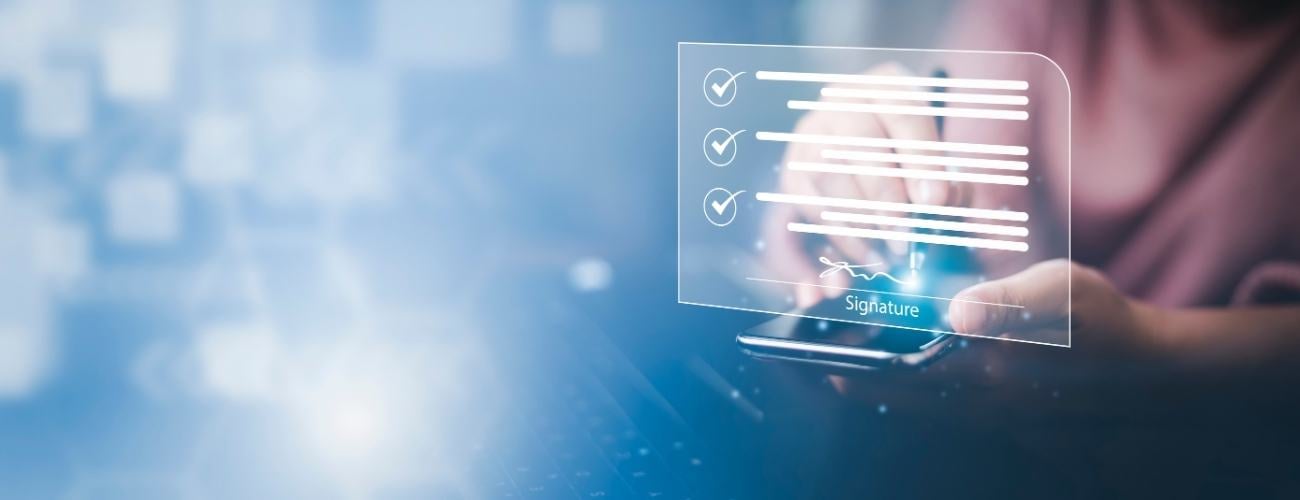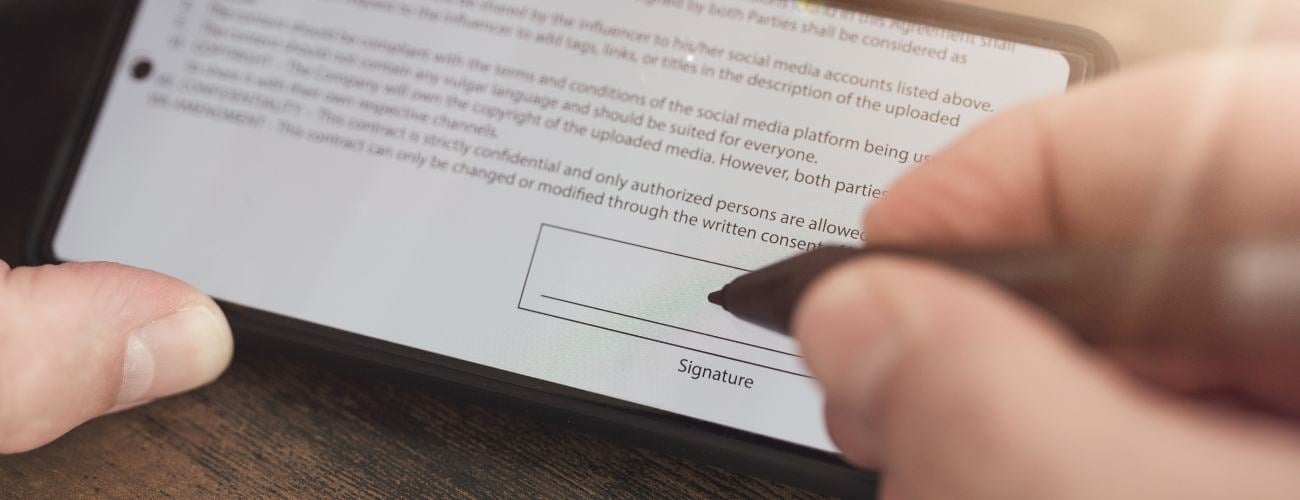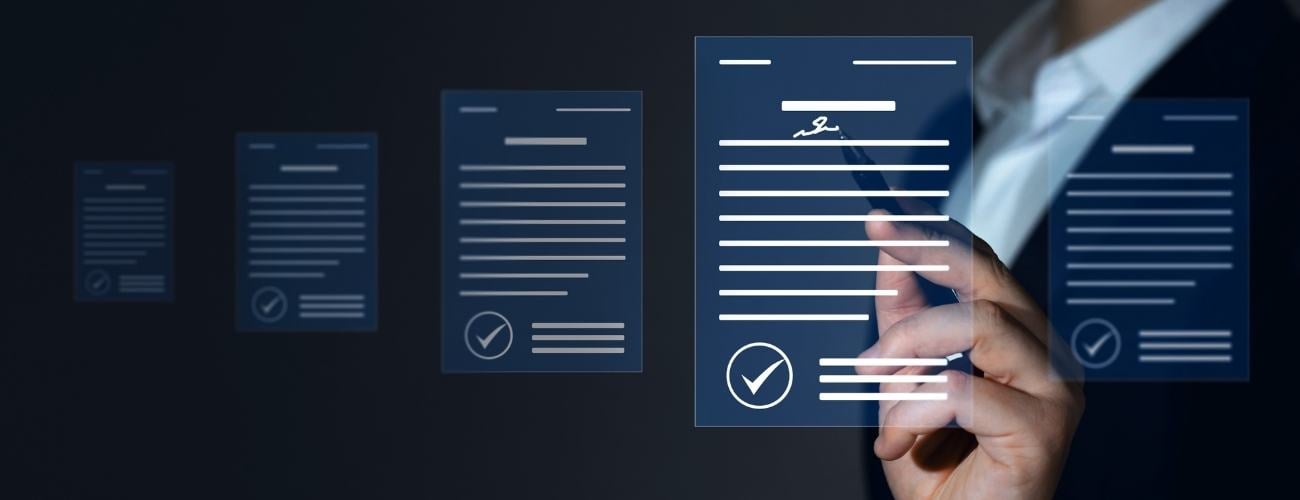In today's fast-paced digital world, businesses and individuals are constantly seeking ways to streamline processes, save time, and enhance efficiency. One such innovation that has transformed the way we handle documents and signatures is electronic signatures, commonly known as eSignatures. In this blog post, we will delve into the world of eSignatures, exploring their significance, benefits, and potential applications across various industries. Join us as we uncover the power of eSignature technology and its impact on modern business practices.

An eSignature is a digital representation of a person's or organization's signature that we can use to sign documents electronically. It is equivalent to a traditional handwritten signature but offers a more secure, convenient, and efficient way of endorsing documents in the digital age.
eSignature technology employs cryptographic algorithms to ensure the authenticity and integrity of the signature. When a person applies their eSignature to a document, the technology creates a unique digital fingerprint, or hash, of the document. This hash is then encrypted using the signer's private key, and the encrypted data is added to the document, effectively "sealing" it with the eSignature. The recipient can verify the authenticity of the eSignature using the signer's public key.
The legal validity of eSignatures is a critical concern for businesses and individuals alike. To address this, many countries have enacted laws that recognize the legal equivalence of eSignatures to traditional ink signatures. In the United States, the Electronic Signatures in Global and National Commerce Act (ETA) was passed in 2000 to ensure the enforceability of electronic signatures in interstate and foreign commerce. Similarly, the European Union has the eIDAS Regulation, which provides a legal framework for electronic signatures and transactions across EU member states.
To ensure compliance with various legal regulations and industry standards, eSignature solutions often employ advanced security measures. These may include encryption, multi-factor authentication, audit trails, and tamper-evident technology, all aimed at safeguarding the integrity and authenticity of electronically signed documents.

1. Improved Efficiency and Productivity
Embracing eSignatures can significantly boost efficiency and productivity in any organization. Gone are the days of printing, signing, scanning, and emailing documents back and forth. With eSignatures, it is possible to sign documents instantly, reducing turnaround time and eliminating the need for physical storage
2. Cost Savings and Environmental Impact
The adoption of eSignatures leads to substantial cost savings by cutting down on paper, printing, and postage expenses. Additionally, reducing paper usage contributes to a positive environmental impact, supporting sustainability efforts and reducing an organization's carbon footprint.
3. Enhanced Security and Authentication
eSignatures offer enhanced security features such as biometric verification, two-factor authentication, and encryption, making them more secure than traditional ink signatures. These measures help prevent unauthorized access, forgery, and tampering of documents.
4. Increased Mobility and Remote Collaboration
With eSignatures, signers can easily sign documents from any location, using a computer, tablet, or smartphone. This flexibility enables seamless collaboration among team members and clients, regardless of geographical barriers.

The financial industry has widely embraced eSignature technology to streamline customer onboarding, loan applications, and account opening processes. eSignatures not only expedite transactions but also enhance customer satisfaction through a more convenient and secure experience.
In the real estate sector, where contracts and agreements are prevalent, eSignatures have become a game-changer. Homebuyers, sellers, and agents can sign documents remotely, reducing delays and simplifying the homebuying process.
In the healthcare industry, eSignatures play a vital role in enhancing patient care and administrative processes. Medical consent forms, treatment agreements, and patient records can all be securely and efficiently signed using eSignature technology.
Governments around the world are adopting eSignature solutions to modernize administrative processes, reduce paperwork, and enhance citizen services. This digitization effort results in improved efficiency, transparency, and citizen satisfaction.
When selecting an eSignature solution, it is crucial to prioritize security features. Look for solutions that offer strong encryption, multi-factor authentication, and compliance with relevant industry regulations.
A robust eSignature solution should seamlessly integrate with your existing business systems and applications. Additionally, consider its scalability to accommodate future growth and changing business needs.
User experience is paramount for successful eSignature adoption. Choose a solution that is user-friendly and provides an intuitive interface for both signers and administrators.
Efficient customer support and comprehensive training resources are essential for a smooth transition to eSignature technology. Ensure that the solution provider offers adequate assistance and training to your team.
eSignature technology has ushered in a new era of efficiency, security, and convenience in the digital world. As businesses and individuals continue to embrace digital transformation, eSignatures are becoming an integral part of modern workflows. The benefits of eSignature adoption are abundant, from cost savings and improved productivity to enhanced security and environmental sustainability. By understanding the power and potential of eSignatures, organizations can position themselves at the forefront of innovation and remain competitive in an ever-evolving digital landscape. Embrace the future of signatures with eSignaturesand unlock a world of possibilities for your business.